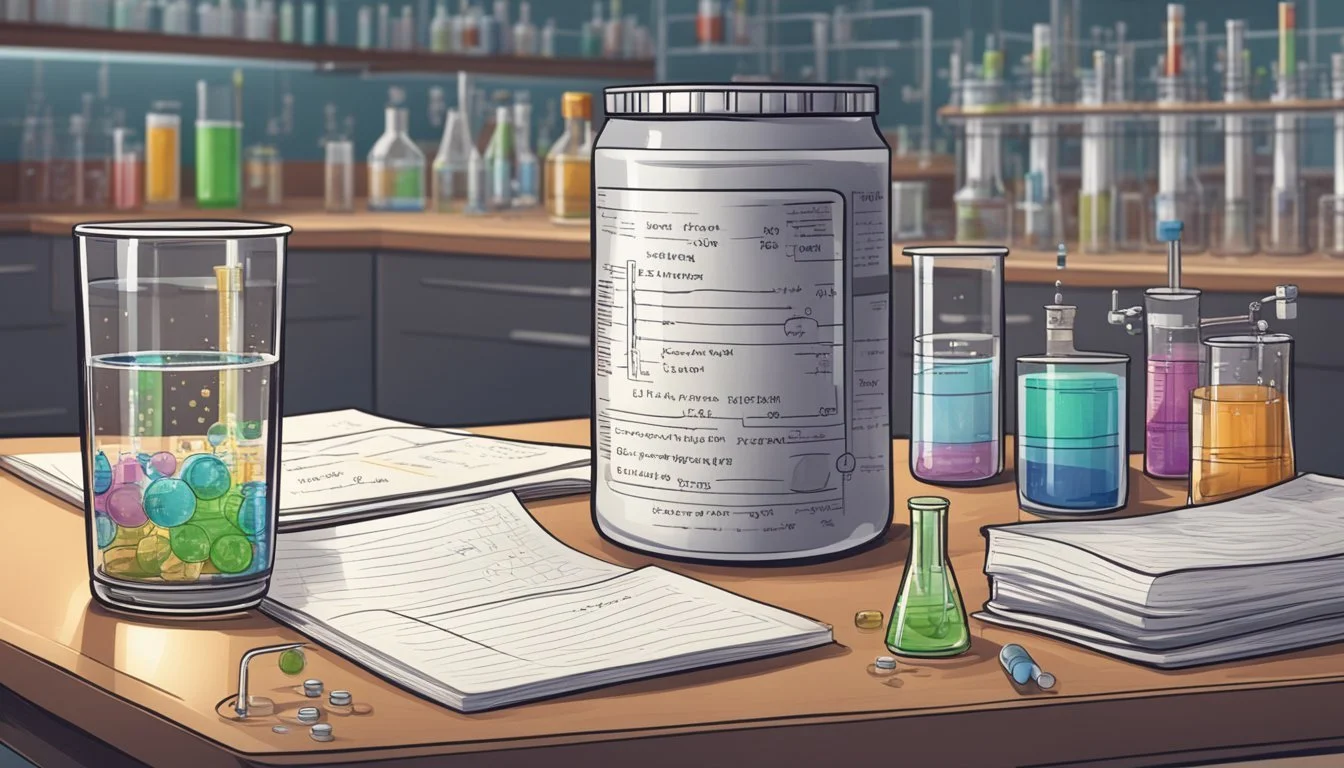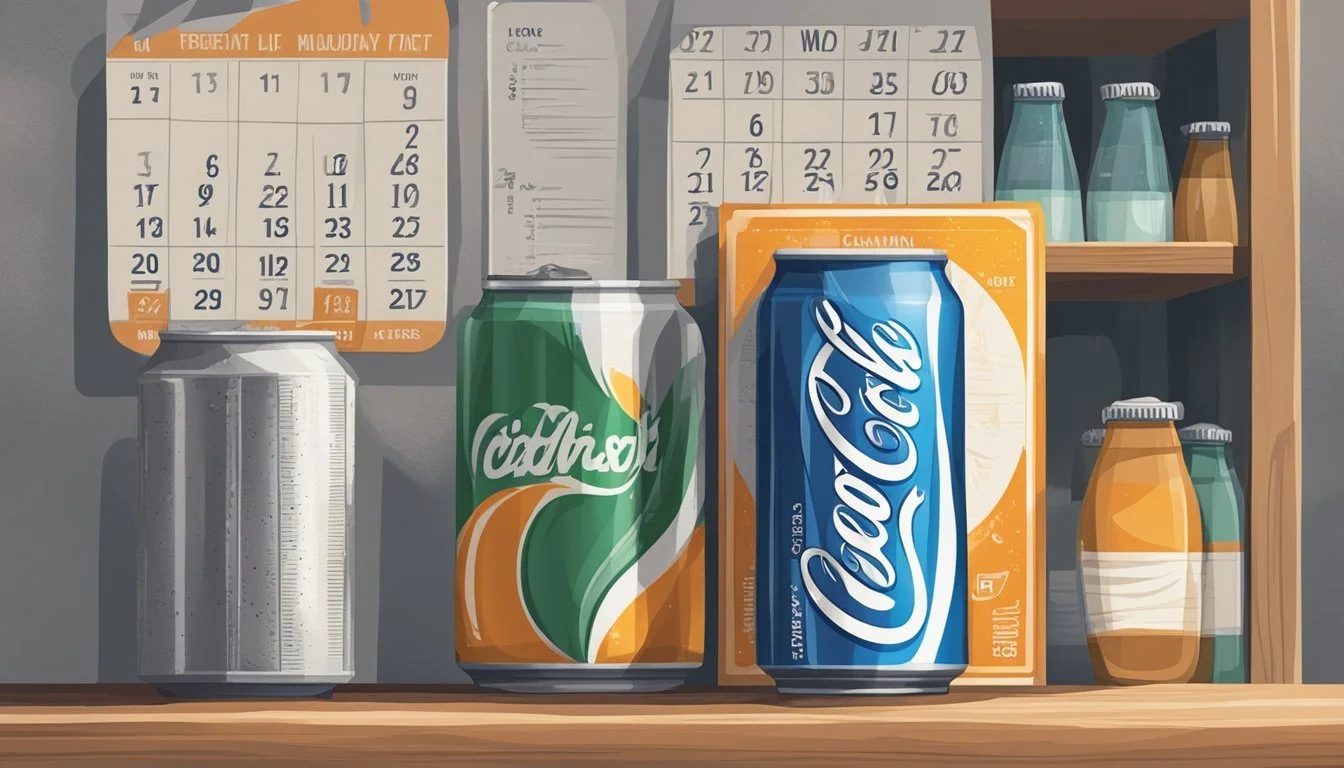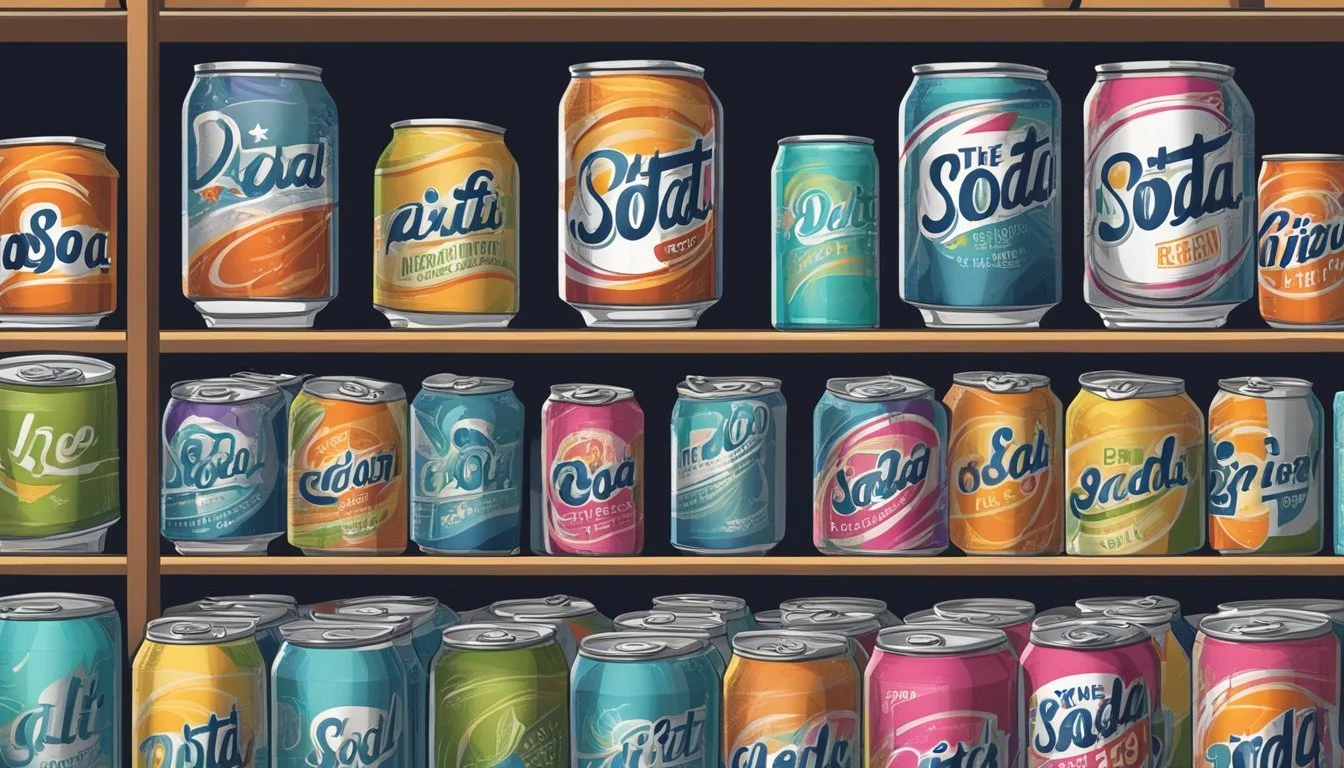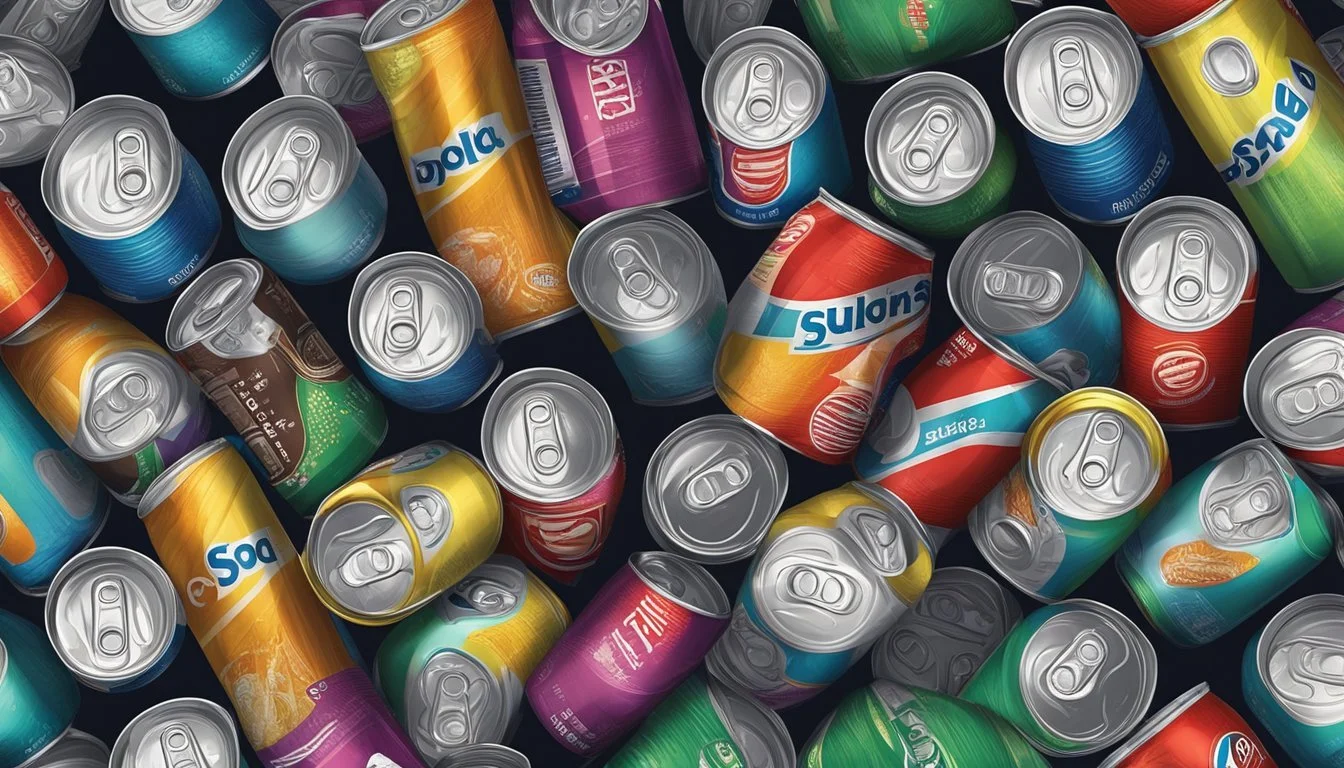Does Diet Soda Expire?
Understanding Shelf Life and Safety
Diet soda, a popular choice for those seeking a low-calorie beverage, often leaves consumers questioning its shelf life and safety after the expiration date. Diet soda can be safely consumed up to three months past the printed expiration date. This extended usability is due to the preservation qualities of the canning and bottling process.
Artificial sweeteners in diet sodas tend to degrade faster than the sugar found in regular sodas. As a result, the taste and quality may begin to change noticeably after this period. While the degradation may affect flavor, it doesn't necessarily pose a health risk.
When deciding whether to drink expired diet soda, it is essential to check for any loss of carbonation or unusual smells. The degradation of sweeteners generally affects the taste more than safety. Keeping these points in mind, consumers can make informed choices about their beverages.
Understanding Expiration Dates
Expiration dates and best-by dates both play a crucial role in determining the shelf life and quality of diet sodas. Understanding these terms helps in deciding when a soda is still suitable for consumption.
Significance of Best-By Dates
Best-by dates highlight the period during which the product maintains its peak quality. This is not an indicator of safety but a recommendation by manufacturers to guarantee taste and carbonation levels. For instance, the USDA suggests that diet sodas retain optimal quality for approximately 3 months past the best-by date. After this period, the drink may lose some of its flavor and fizzy character but is still generally safe to consume if unopened and stored properly.
How Expiration Dates are Determined
Expiration dates differ from best-by dates as they often indicate the last date the manufacturer guarantees the product's safety. Various factors contribute to determining these dates, including ingredient stability, packaging materials, and storage conditions. Bottled or canned diet sodas use materials specifically chosen to preserve carbonation and flavor for up to 6-9 months beyond the labeled date. Agencies like the USDA provide guidelines to help manufacturers set these dates, ensuring consumer safety and satisfaction.
Chemical Properties of Diet Sodas
The chemical composition of diet sodas sets them apart from regular sodas. These distinctions largely stem from the use of artificial sweeteners, specific preservatives, carbonation levels, and their acidic nature.
Artificial Sweeteners vs. Sugar
Diet sodas use artificial sweeteners like aspartame, sucralose, or stevia instead of sugar. Aspartame, found in many diet sodas, breaks down faster in varying pH levels and temperatures.
While sugar-based regular sodas may last longer, diet sodas lose their sweetness over time due to sweetener degradation. Factors influencing this include storage conditions and exposure to heat, which can hasten chemical reactions. This impacts both taste and the overall drinking experience.
Preservatives and Carbonation
Preservatives in diet sodas, such as potassium benzoate, prevent spoilage and microbial growth. Combined with carbonation, these preservatives help extend the shelf life. When a can is opened, carbonation levels drop, making the soda flat faster compared to unopened containers.
Carbonation affects not only the taste but also the soda's preservation. Sealed containers maintain carbonation longer, which helps keep diet sodas fresher for extended periods.
Acidic Nature and Shelf Stability
Diet sodas are typically acidic, with a pH around 3.25, contributing to their shelf stability. The low pH hinders bacterial growth, making the sodas last longer. However, this acidic nature also speeds up the degradation of artificial sweeteners.
Other acidic components such as citric acid add both flavor and preservation qualities. Monitoring the storage environment can mitigate some of the stability issues, ensuring diet sodas maintain quality for the intended period.
Assessing Diet Soda Quality Over Time
Diet sodas, while safe to consume past their expiration dates, may experience noticeable changes in taste and texture. These changes are largely due to the breakdown of ingredients and loss of carbonation.
Changes in Taste and Fizz
The flavor profile of diet soda can deteriorate over time. This is often due to the breakdown of artificial sweeteners like aspartame, which can lose their sweetness much faster than sugar. After about three months past the production date, diet sodas may start to taste different and less enjoyable.
Loss of fizz is another common issue. Carbonation helps to deliver the crisp and refreshing experience associated with soda. Over time, the carbonation may escape the beverage, leading to a flat taste. Sodas stored in plastic bottles often lose their fizz quicker than those in cans due to plastic's permeability.
Visual and Textural Changes
Visually, diet sodas may become less appealing as they age. The development of off-colors or cloudiness can occur due to chemical reactions within the beverage. A notable textural change is the formation of sediment, which can usually be found at the bottom of the container if the soda has been stored for an extended period.
Changes in texture might also include a slightly thicker or even syrupy consistency as certain components break down. Although these changes do not make the soda unsafe to drink, they might impact your enjoyment of the beverage.
Proper Storage Practices
Proper storage of diet soda greatly impacts its taste and carbonation longevity. Temperature fluctuations and exposure to light are crucial factors to consider.
Impact of Temperature and Light
Temperature stability is essential for maintaining diet soda quality. Refrigeration is ideal, as chilled soda retains its carbonation longer. Temperature fluctuations can cause expansion and contraction, leading to leaks or loss of fizz.
Light exposure, particularly sunlight, can degrade the artificial sweeteners in diet soda. Storing in a dark place, like a pantry or closed cabinet, helps preserve the drink's quality. Heat sources should be avoided to prevent spoiling.
Maintain consistent cool temperatures to ensure your diet soda stays fresh and enjoyable.
Best Locations for Storage
The fridge is the best location for diet soda to keep it chilled and carbonated. An extra fridge dedicated to beverages can help keep temperatures stable, especially if it’s less frequently accessed.
A pantry offers a dark, cool environment suitable for short-term storage if refrigeration is not an option. It is crucial to keep diet sodas away from heat sources, such as ovens or direct sunlight, even when stored in the pantry.
Using airtight containers can also help, especially for opened cans, ensuring the carbonation lasts as long as possible.
Differences in Packaging
Diet soda can be found in various packaging options, each affecting its shelf life and freshness. Key factors include the material and sealing method, which influence the soda's taste and carbonation over time.
Plastic Bottles vs. Aluminum Cans
Plastic bottles are a common packaging for diet soda, providing convenience and portability. However, they are more permeable than other materials, potentially leading to a gradual loss of carbonation and flavor over time. This permeability can also result in the absorption of external odors, affecting the taste.
Aluminum cans, on the other hand, offer superior protection against light and air. These containers are less permeable, helping to preserve the soda's carbonation and taste for longer periods. The opaque nature of aluminum also shields the beverage from light, protecting sensitive ingredients from degradation.
Glass bottles can also be found, although less commonly. These provide excellent taste preservation due to their impermeability but are heavier and more prone to breakage.
Impact of Sealing on Freshness
The sealing method plays a crucial role in maintaining the freshness of diet soda. Plastic bottles feature screw-on caps, which may not seal as tightly as other methods. This can allow small amounts of air to enter over time, diminishing the soda's quality.
Aluminum cans employ a crimped seal, creating a more airtight environment. This crimped seal is effective at preventing air from entering, maintaining carbonation and flavor integrity.
In glass bottles, a metal cap with a liner is often used. This type of seal is highly effective at preventing air ingress, thus preserving the beverage's freshness.
In summary, while plastic bottles offer convenience, aluminum cans and glass bottles provide better long-term preservation of diet soda's flavor and carbonation.
Safety and Consumption
Expired diet soda can remain consumable for a limited time past its expiration date but may carry certain risks. It's essential to understand when it is safe to consume expired soda, recognize potential health risks, and identify signs of spoilage.
When is it Safe to Consume Expired Soda?
Diet soda is typically safe to drink for up to three months after the expiration date if stored properly. The airtight seal of the can or bottle helps preserve the soda, preventing contamination.
Storage conditions play a crucial role. Keeping the soda in a cool, dry place helps maintain its quality. Refrigeration is recommended once the soda has been opened to retain carbonation and flavor.
The Risks of Consuming Expired Soda
The primary risks associated with consuming expired diet soda are linked to taste and potential chemical degradation. Artificial sweeteners like aspartame degrade faster than sugar, leading to off flavors and a less pleasant drinking experience.
Health risks are generally low but can include nausea or stomach discomfort if the soda has been improperly stored or contaminated. The acid in soda may also exacerbate these issues, especially if the beverage has been compromised.
Recognizing Spoilage in Diet Soda
Recognizing spoilage in diet soda is essential to ensure safety before consumption. Visual and sensory checks should be performed:
Appearance: Look for changes in color or clarity.
Smell: An off odor indicates that the soda may be spoiled.
Taste: A noticeable change in flavor or carbonation loss suggests degradation.
If any mold or unusual particles are present, the soda should be discarded immediately to avoid health risks.
Conclusion
Diet soda does expire, but it remains generally safe to drink even after the expiration date. The shelf life of unopened diet soda is typically around 6-9 months past the sell-by date when kept in a cool, dry place away from sunlight.
Once expired, the quality of diet soda might decline. Taste and carbonation can be affected, resulting in a less enjoyable beverage. The artificial sweeteners used may lose their effectiveness over time.
Opened diet soda has a shorter shelf life. It is best consumed within a few days to ensure optimal taste and carbonation. Proper storage is crucial to maintain its quality.
In summary, expired diet soda can be safely consumed for a short period beyond its expiration date. Storing it properly and checking for any signs of contamination or damage is essential for safety.








